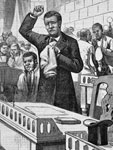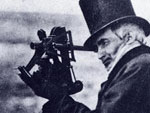Partisans and Redcoats: The American Revolution in the Southern Backcountry
This one-week workshop provides teachers with fresh perspectives on the complex dynamics of the American Revolution in the Southern backcountry, a place where longstanding hostilities between American settlers erupted into a full-scale civil war between Loyalists and Patriots. This program will make use of the rich historical resources in upstate South Carolina. Participants will visit Walnut Grove Plantation and the living history museum at Historic Brattonsville in order to better understand day-to-day life in the backcountry at the time of the Revolution. Then they will tour the battlefields at Kings Mountain, Cowpens, and Ninety-Six to learn more about the nature of backcountry warfare. They will also explore the ways that art, archaeological evidence, and material culture can help increase student engagement with the subject matter. They will examine the war's impact on the region's white women and on its free and enslaved African Americans. A veteran history teacher will serve as master teacher for the workshop, advising participants on ways they can use the content and resources they gain at the workshop in their own classrooms.

